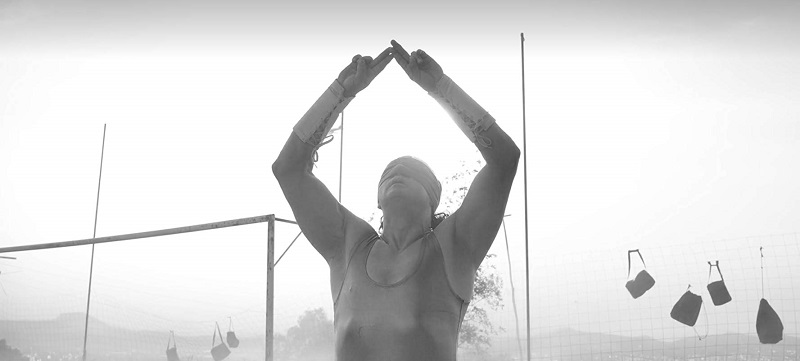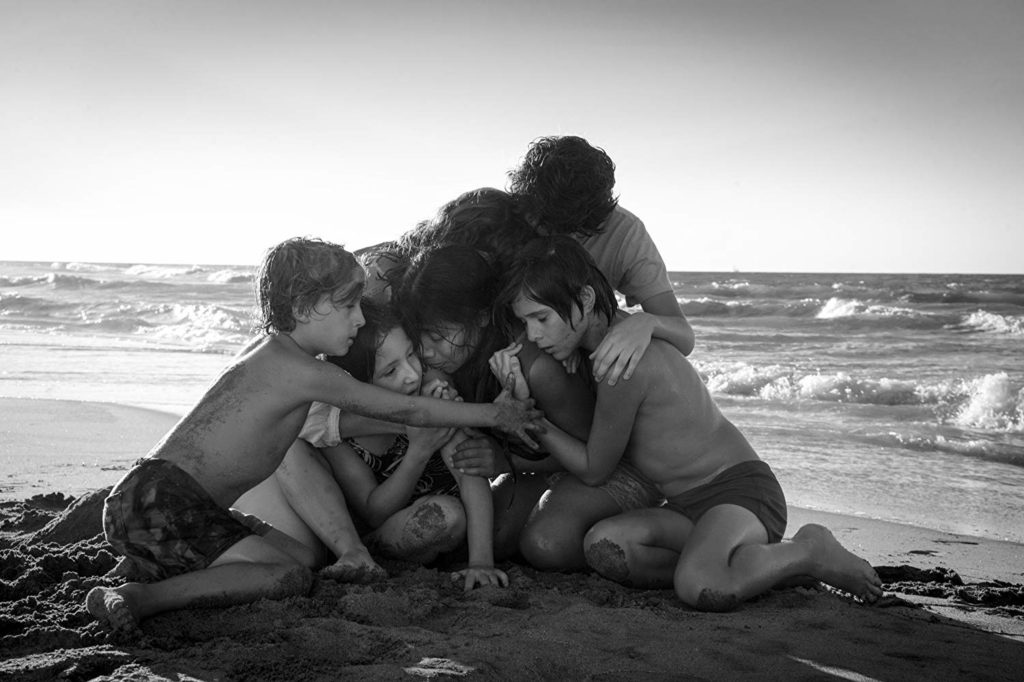How does Oscar winning director Alfonso Cuarón follow-up his English language thriller Gravity? How about going back to his roots with the beautiful, stunning and unforgettable Roma.

The black and white Roma takes place in the 1970s and is based on a myriad of memories of Cuarón’s from his childhood in Mexico City. The story focuses on a maid, Cleo (Yalitza Aparicio), who works for the family of a wealthy doctor. She is doing the best she can, and for the most part is content with the path that life has taken her on. Cleo works, Cleo sleeps and seems to be living day-to-day. That changes when she starts to date a man, Fermín (Jorge Antonio Guerrero), and happiness beyond the mundane living of her days starts to show promise.
Then, she gets pregnant and life is altered.
The family she works for, led by Senorita Sofia (Marina de Tavira), rallies around her and she suddenly has the family that she has been missing. Her pregnancy is a blissful time and even though she’s not sure how she’s going to make it once the baby arrives; one thing is certain—it will not suffer for love.
That is a running theme through Roma, love or the lack thereof. It is a powerful, often used, trope. In the hands of Cuarón, it is unlike anything we’ve seen before. By utilizing the format of black and white, the filmmaker has taken color off the table and his actors and actresses must use their toolboxes to convey the shades and brightness of any given day, any given moment and any given emotion. It is mesmerizing, all consuming and a gift to us all that Cuarón has made this picture.

Although the film will be released on Netflix today, I cannot recommend enough that it is seen on the big screen. The black and white is almost more powerful and more compelling to the audience, given what our protagonist experiences.
There is little hope for a future beyond the world Cleo possesses. That is a grey cloud, not dark, but grey, that hangs over her and this picture. But there are joys found in the most unexpected of places—for example when Cleo joins the family for a trip to the beach, it is a powerful, entertaining and thoroughly enlightening moment in Roma.
That’s the key here to the narrative and filmmaking style of the movie. These are a series of moments, culled together to inform a narrative. It seems simple, but it is as complicated as anything Cuarón achieved in the stranded-in-space-epic Gravity. Each shot is meticulously thought out. The filmmaker also did double duty as cinematographer. Therefore, the image we see is 100-percent exactly what our storyteller imagined when he penned the script. How he frames his subjects, the use of the sun as light and even airplanes flying by in the daytime sky all add up to a visual cornucopia of charm, compassion and above all else… hope.

Roma is inspiring on every level. Whether you speak Spanish or simply read the subtitles in your native tongue, the power of the prose and the actors delivering it is subtlety explosive.
Aparicio is a bright light, whose screen presence is one that will elicit all sorts of feelings. Don’t be surprised if after witnessing Roma, you will want to give Cleo a big hug and let her know that it will all be OK. Aparicio delivers a performance that is one for the ages. She carries this film and is in practically every scene. The simplest of tasks are made to be major moments in one’s day, all through the command that the actress has over the audience. Simply washing the floor with water and a mop is a cinematic moment of the highest order. That, of course, must also be credited to the film’s director.
Something else that Cuarón does with this picture is he lingers on certain shots and moments longer than most Hollywood directors would. That only elevates the emotional connection and the “put the audience in the movie” feel of Roma. We’re so trained as movie goers to expect a scene to end, cut, and move to the next scene as soon as the lines, action or whatever are delivered. Cuarón never does that. Each moment in Romais like a rose pedal opening. It takes a while to get there, but the exquisiteness of the endeavor is what makes it so truly special. By hanging on these moments and not cutting away to another scene, another milestone is achieved. The cinematographer in Cuarón has allowed his audience to truly take in every single pixel of the frame, from top corner to bottom corner and everything in between. In that manner, Roma exists more as a piece of art than 99-percent of the movies released this year… or in recent memory.
Grade: A+

